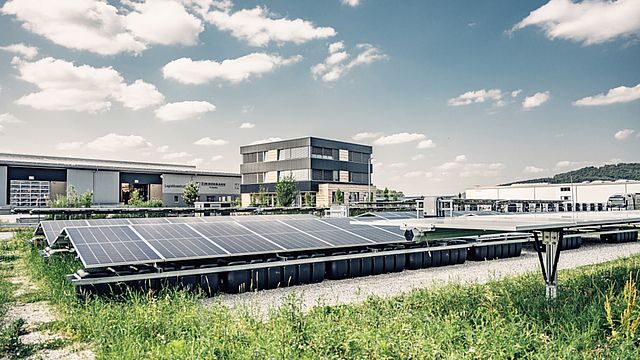Flexible finance options in the fight against climate change
Our Portfolio
In the race against the climate crisis, businesses are coming under greater pressure from investors, policymakers and customers to transition to a renewable power supply. Despite this huge sense of urgency, corporations need to be sure that they secure a reliable, competitive source of green electricity.
This is why flexible financial solutions, ones which don’t call for initial investment, are becoming more and more popular.
We’ll help your business play its role in tackling climate change without putting pressure on its line of credit.
Choose from various leasing options, investment strategies or power purchase agreements (PPAs) to plan your roadmap towards proactive environmental responsibility.
Finance Lease
Leasing allows the integration of renewable energy to generate electricity for your business without initial investment or pressure on your bottom line. Using this model, you’ll be charged a monthly rate until ownership of the renewable energy plant is transferred at the end of the lease.
These contracts are shorter, more flexible and more straightforward than PPAs.
Under most standard accounting practices, you can also claim depreciation of the asset.
Leasing can be a way to save on electricity bills while maintaining total control of investment, including whatever custom terms and conditions you require.
Operate Lease
Renting is another option for committing your company to renewable energy. This model is similar to the leasing approach, with one important difference. At the end of an operating lease agreement, the customer doesn’t end up automatically owning the renewable energy installation. These agreements allow use of the asset for the length of the contract.
Because of this, rented assets might not show up on a business’ balance sheet under some circumstances. One additional benefit of the operating lease agreement model is that its associated costs can be fully recognised on your company’s income statement as operating expenses.
Power Purchase Agreements (PPAs)
Renewable energy often requires finance from a third party like banks or financial institutions, but they’re unlikely to make unsecured loans. In the absence of public subsidies in some countries, a Power Purchase Agreement (PPA) provides that security.
This model is a contract between a company and an energy producer to buy energy deriving from a specific project at a pre-agreed price, for a fixed period of time. It stipulates the duration, point of supply, delivery times, volume, price and product. Electricity purchased through a PPA can come from power plants located either outside of the customer’s property (off-site PPA) or on-site (from a newly built project).
While the on-site (direct-wire) PPA transmits electricity straight to the consumer and is located usually at the same location as the company site, the off-site (sleeved) PPA transmits electricity to the grid first, before distributing it to the customer. Even though an off-site PPA has a higher location flexibility, the energy plant and the off taker need to share the same grid network as the energy is physically exchanged.
Direct Investment
For many customers, a direct investment in the form of a renewable energy installation (like a rooftop solar system or a PV carport) makes sense. In this case, you have the option of a project where experts handle everything, starting from engineering to procurement and onward to the final construction works. Stress and risk are removed from your shoulders entirely.
Another long-term benefit for your business is the reliable generation of green electricity. Of course, such an installation requires an initial investment. But these are often offered with longer than average repayment periods to make them as viable as possible for your business.
Find your route to renewable energy
We’re here to help you make informed choices about your business’ transition toward a renewable energy supply. You have plenty of options, but the best choices might not always be immediately clear. Using our decision tree, you can find the pathway that’s right for you.
Consider your individual case: what initial investment are you willing to make, if any? Do you want to take responsibility for operations and maintenance? Do you mind your renewable energy installation showing up on your balance sheet?
We’re more than happy to assist you by identifying the ideal energy sourcing mix for your needs.





